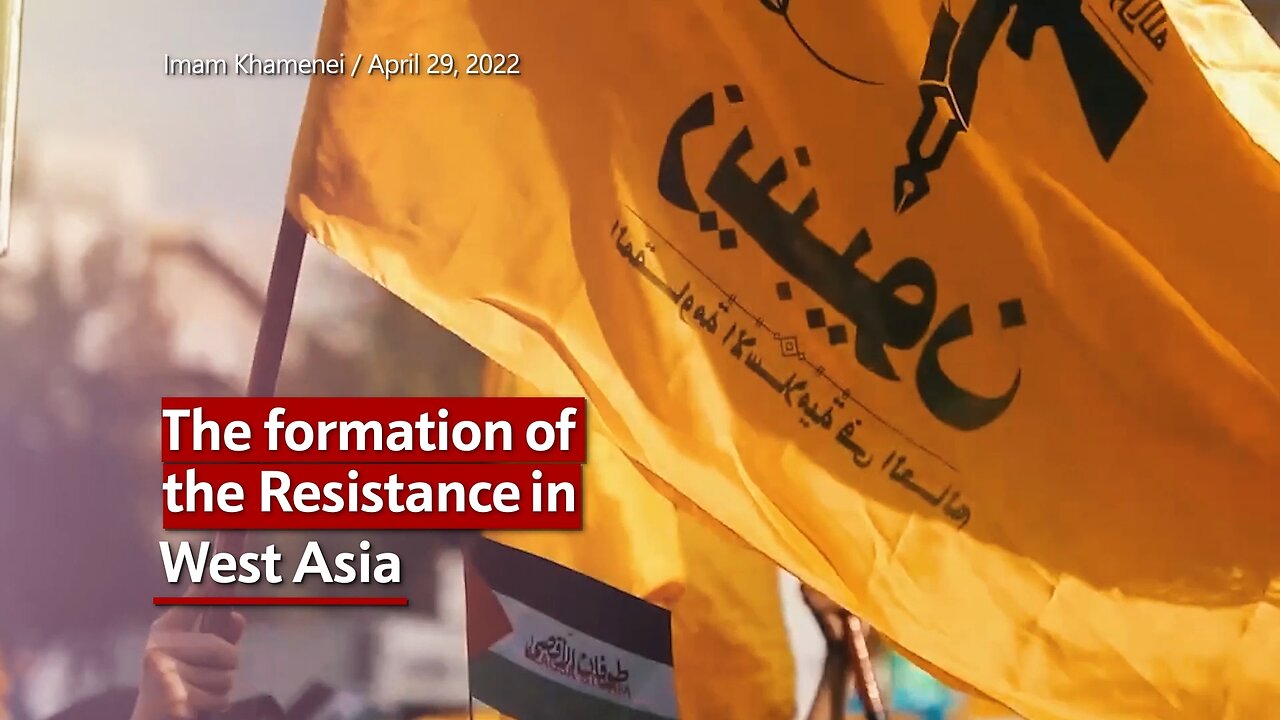Premium Only Content

The Deir Yassin massacre still matters
Seventy-five years ago, Zionist militias tore through Palestinian villages, massacring the villagers and expelling those who remained alive, to clear the way for the creation of the state of Israel.
An estimated 15,000 Palestinians were killed and hundreds of thousands fled their homes to live as refugees in other parts of Palestine or neighbouring countries, an event known by Palestinians as the Nakba – “the catastrophe”.
On April 9, 1948, just weeks before the creation of the State of Israel, members of the Irgun and Stern Gang Zionist militias attacked the village of Deir Yassin, killing at least 107 Palestinians.
According to testimonies from the perpetrators and surviving victims, many of the people slaughtered – from those who were tied to trees and burned to death to those lined up against a wall and shot by submachine guns – were women, children and the elderly.
As news of the atrocities spread, thousands fled their villages in fear. Eventually, some 700,000 Palestinians would flee or be forcibly displaced at the outset of Israel’s creation, making the massacre a decisive moment in Palestinian history.
It was a Friday afternoon when the militia struck Deir Yassin, where about 700 Palestinians lived. Most were quarry workers and stone cutters.
According to the Israeli narrative, Operation Nachshon aimed to break through the blockaded road to Jerusalem and the fighters encountered stiff resistance from the villagers that forced them to advance slowly from house to house.
But Palestinians and some Israeli historians say the villagers had signed a non-aggression agreement with the Haganah, the pre-Israeli-state Zionist army. They were nevertheless murdered in cold blood and buried in mass graves.
According to a 1948 report filed by the British delegation to the United Nations, the killing of “some 250 Arabs, men, women and children, took place in circumstances of great savagery”.
“Women and children were stripped, lined up, photographed, and then slaughtered by automatic firing and survivors have told of even more incredible bestialities,” the report said. “Those who were taken prisoners were treated with degrading brutality.”
Israeli historian Benny Morris said the militias “ransacked unscrupulously, stole money and jewels from the survivors and burned the bodies. Even dismemberment and rape occurred.”
The number of dead is disputed but ranges from 100 to 250. A representative of the Red Cross who entered Deir Yassin on April 11 reported seeing the bodies of some 150 people heaped haphazardly in a cave, while around 50 were amassed in a separate location.
News of the massacre spread panic among the Palestinians, prompting hundreds of thousands to flee. Four nearby villages were next: Qalunya, Saris, Beit Surik and Biddu.
Deir Yassin was no mistake, according to Israeli historian Ilan Pappé: “Depopulating Palestine was not a consequential war event, but a carefully planned strategy, otherwise known as Plan Dalet, which was authorised by [Israeli leader David] Ben-Gurion in March 1948,” Pappé wrote. “Operation Nachshon was, in fact, the first step in the plan.”
The massacre unleashed a cycle of violence and counterviolence that has been the pattern since. Jewish forces have regarded any Palestinian village as an enemy military base, which has paved way for the blurred distinction between massacring civilians and killing combatants, according to the historian.
-
 LIVE
LIVE
CLUJ
5 hours agoCHRISTMAS EVENING HYPE!! LETS HAVE FUN GAMING!!
667 watching -
![I AM FINALLY BACK :: PUBG: BATTLEGROUNDS :: RUMBLE NOW HAS GIFTED SUBS!!! [Merry Christmas] {18+}](https://1a-1791.com/video/fwe1/22/s8/1/e/f/C/6/efC6v.0kob-small-I-AM-FINALLY-BACK-PUBG-BATT.jpg) LIVE
LIVE
a12cat34dog
6 hours agoI AM FINALLY BACK :: PUBG: BATTLEGROUNDS :: RUMBLE NOW HAS GIFTED SUBS!!! [Merry Christmas] {18+}
106 watching -
 3:55:42
3:55:42
STARM1X16
6 hours agoMerry Christmas Fortnite
35.2K4 -
 2:45:33
2:45:33
Sgtfinesse
6 hours agoMerry Christmas Night
38.4K16 -
 LIVE
LIVE
tacetmort3m
22 hours ago🔴 LIVE - (MERRY CHRISTMAS) TIME TO SPREAD DEMOCRACY - HELLDIVERS 2 OMENS OF TYRANNY
94 watching -
 12:42
12:42
Cooking with Gruel
21 hours agoBrown Butter Trifle with Salted Caramel and Cinnamon Apple
14.4K3 -
 2:46
2:46
BIG NEM
9 hours agoDiscovering RAKIJA: The Holy Liquer of the Balkans
11.8K2 -
 1:11:38
1:11:38
Film Threat
14 hours agoCHRISTMAS DAY CHILL STREAM WITH CHRIS GORE | Hollywood on the Rocks
134K30 -
 14:22:40
14:22:40
The Quartering
1 day agoYule Log Christmas MAGA Edition With Memes! Come Hang Out!
224K29 -
 38:41
38:41
MYLUNCHBREAK CHANNEL PAGE
1 day agoTimeline Begins in 1800? - Pt 1 & 2
104K56